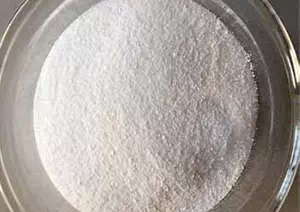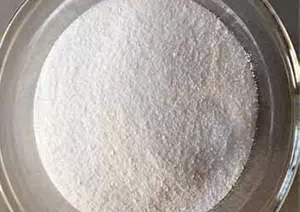All Categories


Alpha-Arbutin CAS 84380-01-8, Alpha-Arbutin, CAS 84380-01-8
α -arbutin (CAS 84380-01-8) has become the preferred active ingredient in high-end cosmetics due to its highly efficient whitening mechanism (tyrosinase inhibition is 10 times that of the β- type), high-temperature stability and safety (does not produce hydroquinone).
CAS : 84380-01-8
Formula : C12H16O7
Mol. wt. : 272.25
EINECS : 209-795-0
| CAS | 84380-01-8 |
| Molecular formula | C12H16O7 |
| Molecular weight | 272.25 |
| EIENCS | 209-795-0 |
| Form | Solid |
| Melting point | 195-196°C |
| boling point | 561.6±50.0 °C(Predicted) |
| Density | 1.556±0.06 g/cm3(Predicted) |
| Solubility | DMSO (Slightly), Methanol (Slightly) |
| PKA | 10.10±0.15(Predicted) |
| Color | White to Off-White |
| Storage temp | 2-8°C |
Production process and Characteristics of 4-hydroxyphenyl -α -D-Pyran glucoside
Synthesis method
Enzyme catalysis method: The mainstream process, which utilizes microbial enzymes (such as sucrose phosphorylase) to catalyze sugar transfer reactions.
Biological transformation method: Using hydroquinone and glucose as substrates, the α -configuration is synthesized in a directional manner through biological enzymes, with a purity of ≥99% (HPLC).
Product advantages
Highly effective whitening: The intensity of inhibiting tyrosinase activity is 10 times that of β -arbutin (mixed inhibitory mechanism), blocking the conversion of dopaquinone into melanin.
Safety: No decomposition to produce hydroquinone (β -type may decompose at high temperatures), no cytotoxicity or sensitization.
Durability: The stability of the whitening effect is 15 times that of the β -type, and the effect can still be maintained after discontinuation.
Cosmetics (Core Applications)
Whitening and freckle removal: Add to essence and face cream (concentration 0.2-5%) to reduce pigmentation and freckles and improve uneven skin tone.
Synergistic effect: It has the functions of anti-inflammation, sterilization and repairing ultraviolet damage.
Other fields
Food industry: Antioxidants (beverages, candies), extend shelf life (must comply with FEMA limits).
Agriculture: Plant growth regulators, enhancing stress resistance; Pesticide enhancer.
Feed additives: Enhance the antioxidant capacity and growth efficiency of animals.
Toxicology and operation
Safety: Low toxicity (oral administration of LD₅₀ in rats > 5g/kg), no record of mutagenicity.
Protective requirements: Gloves and goggles must be worn during operation to avoid inhaling dust.
Storage: 2-8 °C, sealed in a dark place, away from strong oxidants.
* Prompt reply and 24 hours online, professional team to provide best price and high quality product.
* Sample testing support.
* Every batch of products will be tested to ensureits quality.
*The packing also can be according the customers` requirment.
*Any inquiries will be replied within 24 hours.
*we provide Commerical Invoice, Packing List, Bill of loading, COA , Health certificate and Origin certificate. If your markets have any special requirements, let us know.